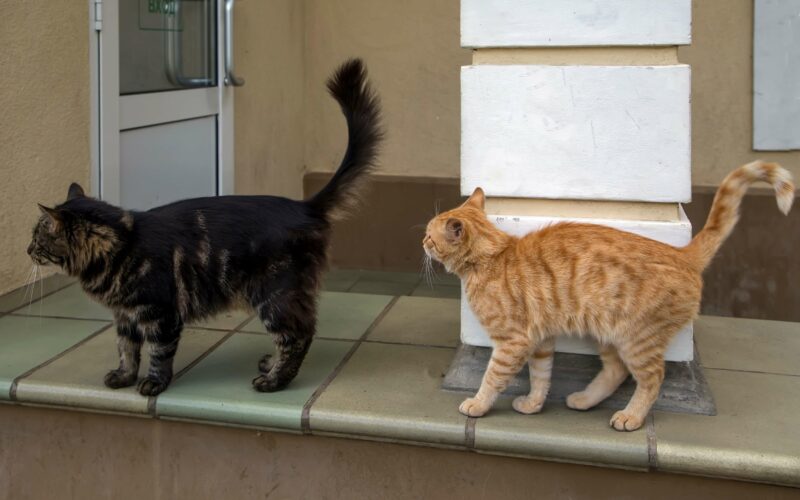Let’s take a look at the exciting world of feline communication!
Have you ever watched your cat’s tail quiver and wondered why? Cats are fascinating creatures with their style of talking. One of their most distinctive kinds of language is the quivering of their tails. How a cat’s tail moves can show many different feelings, from excitement and playfulness to fear and anger.
Understanding this behavior might help strengthen your bond with your pet and help you better understand their needs and desires. In this post, we’ll look at the six main reasons why a cat’s tail quivers and what they indicate. Prepare to become a cat tail quiver expert and learn more about your feline friend’s language!
Reason 1: Your Cat is Happy to See You or Another Cat

When they see someone or another cat, cats are known to show excitement. This is typical behavior when a cat is reunited with its owner after a long day or when they awaken early in the morning. When a cat is joyful and thrilled, their tail will normally quiver straight up and fold over its back. This is generally followed by the cat purring and making “sleepy eyes” at the owner. This is a natural sign of trust because it shows the cat’s smell glands and lets them know they are safe.
This type of behavior is not limited to humans. When cats see another cat, they exhibit enthusiasm and excitement. The same behaviors are frequently observed, including a quivering tail, purring, and droopy eyes. Cats can also greet each other by rubbing against each other and meowing. This is commonly done to trade smells and expresses mutual goodwill.
Understanding these actions will help you better understand your pet’s emotions and sentiments. Not only that, but it can aid in strengthening the attachment between the cat and its owner. Paying attention to signs of excitement and happiness can help both sides build a connection based on trust and care. When a cat feels relaxed and comfortable, they are more likely to respond positively to its owner.
Reason 2: Your Cat is Trying to Say Hello
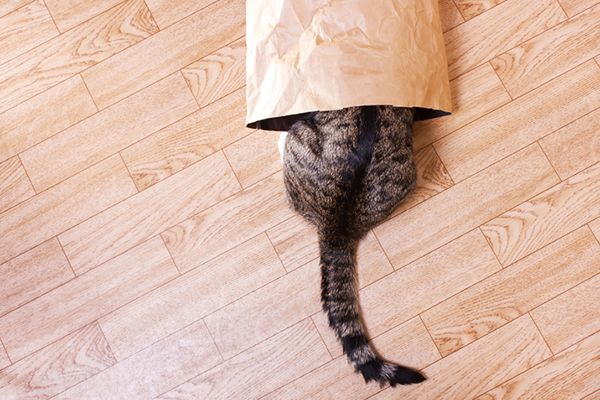
When a cat’s tail quivers, it is a subtle sign of affection that is often misunderstood or misread. It symbolizes trust, acceptance, and a kind greeting that cats extend to one another and humans. When cats’ tails quiver, it’s usually a sign that they’re happy and content with where they are. This is a sign of contentment and trust, meaning that the cat is at ease with the human or animal with whom it is engaging.
The tail quiver is also a humorous indicator. Cats’ tails may tremble while they are playing or when they are in a playful mood. This indicates that they are in a good mood and eager to interact with someone. Cats may also twitch their tails to attract attention and urge interaction when they feel ignored.
Though the tail quiver is a sign of friendliness, it is crucial to note that cats’ tails can also quiver when threatened or scared. This is an indication of fear and should be taken seriously. If your cat’s tail twitches, you must look at its body language to determine if it’s scared or happy.
Reason 3: Your Cat is Engaging in Predatory Behavior

In the wild, cats are known for being predators. They catch and kill small animals like rodents and birds with quick reflexes, good eyesight, and strong muscles. They stalk their victim before sneaking up on them and pouncing. Cats may engage in predatory behavior in captivity. Still, instead of catching and killing their prey, they may use their claws to pick up and carry objects, such as toys, or merely swat and bat at them.
Cats’ predatory behavior can also be used to communicate dissatisfaction or excitement. When a cat is frustrated, it may swipe at objects or “hunt” them, but no actual harm is done. In the same way, if a cat is too happy, it may act like a predator by chasing toys or other objects and pouncing on them.
Because cats are born with an instinct to hunt, giving them many chances to do so is vital. Provide plenty of toys and objects for your cat to pursue, chase, and pounce on. You can also let them hunt live prey like crickets and mealworms in a secure area. This will help them satisfy their natural desire to go hunting, keeping them from acting up in the house. You may also equip them with scratching poles to allow them to exhibit their natural behavior without scratching furniture or other objects.
Reason 4: Your Cat is Feeling Happy and Confident
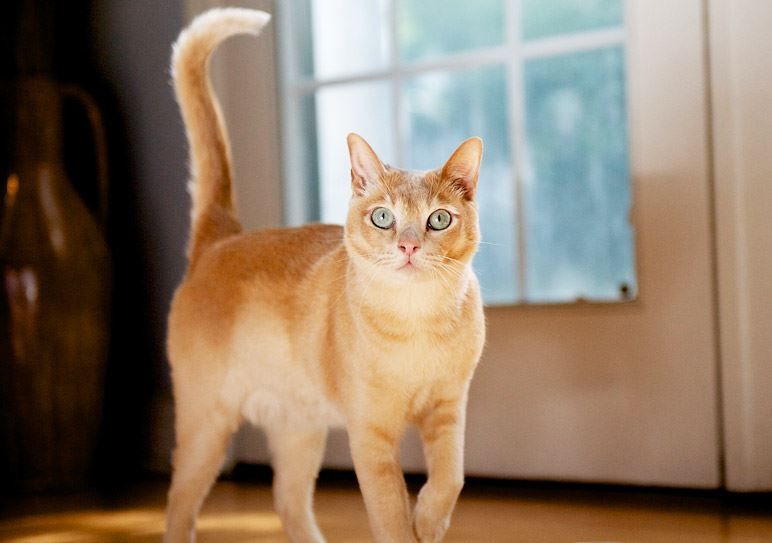
A cat’s twitching tail indicates contentment. It shows that the cat is safe, secure, and sure of itself enough to show how it feels. Even though the quiver is a slight movement, it shows that the cat is happy and content. It is most commonly seen when a cat is being petted or when another animal or person is around.
The fact that the cat’s tail is twitching shows that it is happy where it is. It could be because the cat feels safe or is being caressed or handled the way it prefers. The quiver is sometimes followed by purring, another indicator of happiness and contentment. When a cat is confident, it shows it by twitching its tail. This suggests that the cat is secure, content, and neither afraid nor anxious. It signifies the cat’s comfort and joy in its current environment.
When a cat’s tail quivers, the cat is friendly and confident. This could be because the cat has developed a bond with its owner or because it feels safe and content in its current surroundings. It indicates that the cat is relaxed and free of fear or anxiety. This is a good sign for your cat’s mental and physical health because it shows that it is happy with its surroundings and is not upset.
Reason 5: Your Cat is Eager to Interact
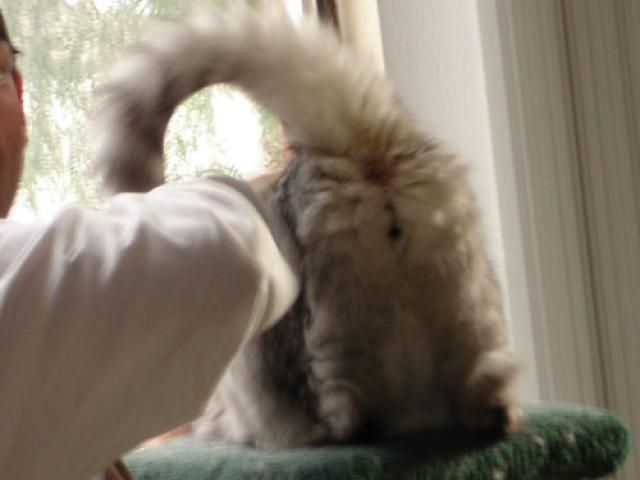
A cat’s quivering tail indicates its desire to interact with others. While some cats prefer to keep their distance, those with quivering tails are usually more social and welcoming. Most of the time, this happens when a cat is around other cats or people. It could indicate a desire to play, explore, or be near another creature.
A quivering tail can also indicate that the cat is nervous or terrified. It is imperative to keep an eye on your cat if the shaking is accompanied by other signs of panic, like dilated pupils, flattened ears, or a tucked tail. Approaching a fearful or worried cat should be done slowly or not at all. You need to identify the general mood before deciding if the cat is friendly or afraid.
When interacting with cats, it is critical to notice the quivering of the cat’s tail. Cats with quivering tails are more gregarious and friendlier in general. This usually happens when a cat is around other cats or people, meaning the cat wants to play, investigate, or be with the other species. Engage it gently, and it will most likely respond positively to your presence. Paying attention to a cat’s tail quivering can help you understand its mood and behavior.
Reason 6: Your Cat is in a Great Mood!
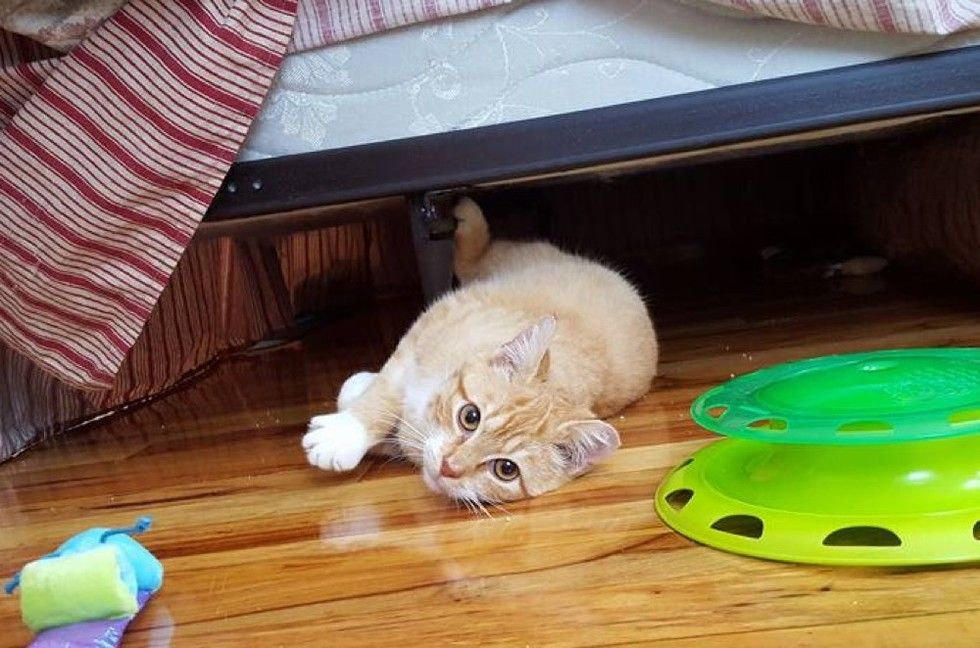
The twitching of a cat’s tail indicates its inner happiness and contentment. It may be observed when a cat is playing with its favorite toy, getting rubbed by its owner, or curling up for a nap. This shivering is usually accompanied by purring or kneading.
The tail quivering is an automatic reaction, and cats aren’t always aware of it. It’s a bodily reaction to the pleasure of being patted or played with. Technically, it’s a sign of relaxation and satisfaction. Cats also use their bodies to show how happy they are, and a quivering tail is one of the most reliable ways to do this. A contented cat will arch its back, raise its hair, and meow. It may also rub its owner’s face, stretch, and purr.
Cats may express their satisfaction through their behavior in addition to these external signals. If a cat is happy, it will be more active and lively and may even try to find human friends. It may also follow its owners around the house and cuddle up to them.
Final Thoughts
Lastly, if you can figure out why your cat’s tail is twitching, you might feel closer to them. Knowing how cats communicate and express themselves through this delicate movement allows you to respond better to their wants and feelings. A cat’s quivering tail can tell you a lot about how it feels, whether it’s happy, scared, or playful.
So, the next time you notice your cat’s tail trembling, analyze its body language and environment. You might be amazed at how much you can understand its mood and intent through its body language. And who knows, you might be able to improve your relationship with your cat in ways you never imagined possible by extending your understanding of cat communication.
Further Reading
